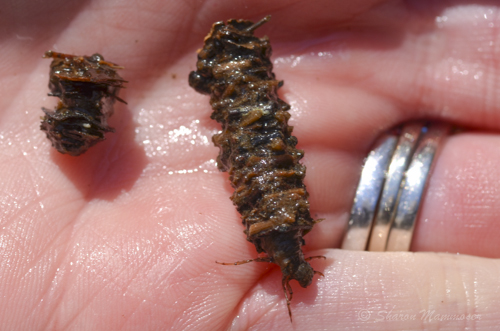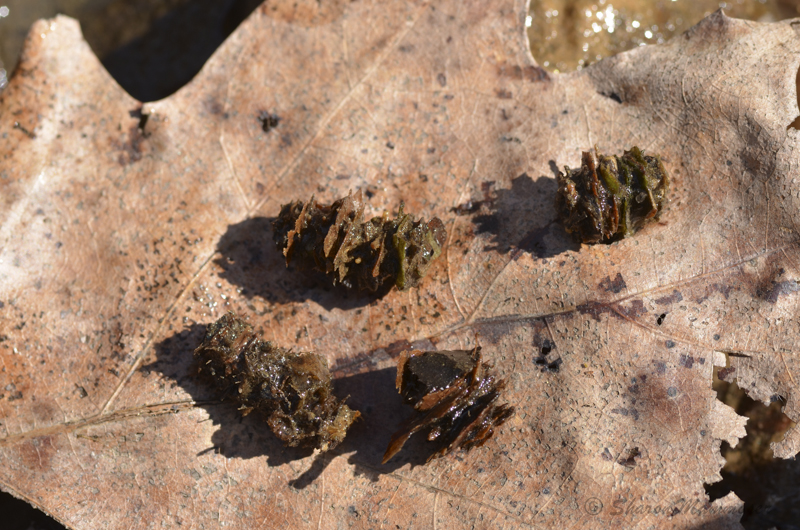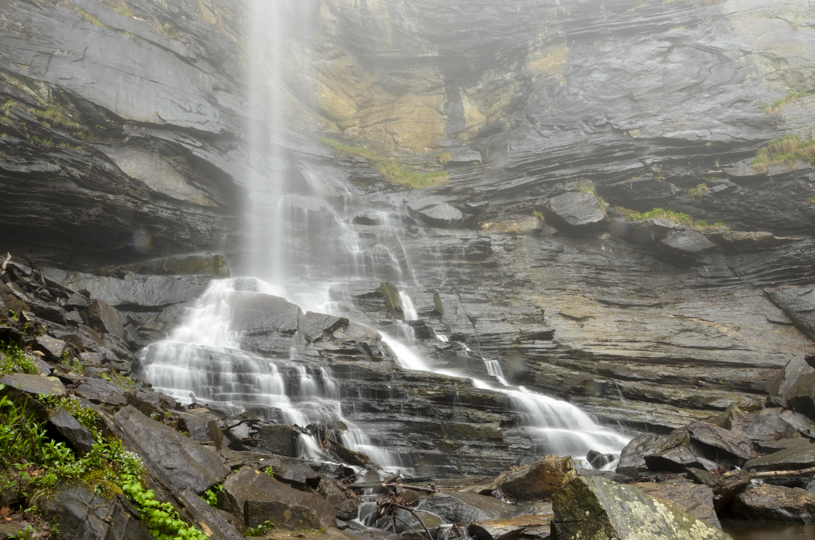 Here is the answer to the very first Weekly Puzzler Challenge. Did you guess correctly? They are from an insect called a Caddisfly! Read below to learn about caddis flies and their amazing cases that they make from available materials.
Here is the answer to the very first Weekly Puzzler Challenge. Did you guess correctly? They are from an insect called a Caddisfly! Read below to learn about caddis flies and their amazing cases that they make from available materials.
If you have ever spent any time sitting beside a pond or stream and looking into the clear water, you may have noticed some tiny creatures moving around in the water. Some, though small, have recognizable legs and bodies and likely belong to macro invertebrates. Animals like dragonflies, damselflies, mosquitoes and many others begin their lives in water.
Sometimes you may notice what appears to be moving teeny tiny pieces of leaves. If you pick one of these up and set it on your hand, you will soon see that there is a creature inside this miniature tunnel. It is called a Caddisfly larva and like many of the other creatures that start their lives in the water it has fascinating adaptations that allow it to be successful.
I love finding these when I am with a group of children because it is such a cool experience for them to put one on their hand and then watch it to see what happens. Usually the kids are skeptical that anything at all will happen but if they are patient, sure enough, the tiny creature inside will eventually pop its head out and start to pull along its tiny tunnel.
Some children laugh delightedly with pleasure, being tickled by the mini legs. Others are frightened when what appears to be a tiny nothing suddenly starts moving.
Caddisflies live in freshwater around the world, with over 7000 species. Some of these are omnivorous (plants and animals, some herbivorous (plants) and some carnivorous (meat-eating). Many make cases to protect themselves and depending on the species, these can be made of many different materials from tiny pebbles, to leaves and sticks. Some build their cases under rocks, anchoring themselves to the bottom so that when you pick up the rock and look closely, you can see these cases cemented there.
Caddisfly adults are delicate looking with folded wings over their bodies. They live several weeks. As adults they are incapable of eating solid matter so instead feed on flower nectar.
Next time you’re at a pond or stream, try to find one of these amazing critters moving along the bottom.


1 thought on “Weekly Puzzler Answer #1”
Comments are closed.